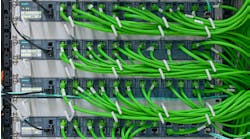By Heath Stephens, PE, Hargrove Controls & Automation, CSIA certified
In the early days of process control, “connectivity” referred to getting data into the PLC/DCS or sharing data between PLC or DCS platforms. Vendors touted “open systems” that could transfer data via standardized protocols to other vendors’ control-system platforms, but often control systems were firewalled or even air-gapped to the outside world.
Now that fully automated processes have become commonplace, more clients want to connect their DCS and PLC platforms to business systems like ERP (enterprise resource planning), CMMS (computerized maintenance management systems), and LIMS (laboratory information management systems) platforms. Connecting these different platforms is one aspect of Industry 4.0 and digitalization.
It has traditionally been difficult to transfer data in and out of these platforms since they don’t use Modbus, OPC, or any other common protocols used by the process-control industry. The most common means of data transfer often involves using a historian as a middleman and the use of either SQL, custom API calls, or (frequently) a flat text file and FTP. These methods are cumbersome to implement, often requiring custom VB or C code, and often involving restrictions on update times and data-flow directions.
However, that has begun to change with new low-code/no-code solutions that can be implemented by a process-control engineer with only limited support from IT and business-system owners. These new products can help ease or completely bypass past connectivity issues and come in three basic categories:
Middleware—This is software that is “bilingual” and able to communicate common control-system protocols and business-system protocols. For example, consider software that is set up via a function-block-style interface, connects to multiple business systems, and converts that data to OPC connections. It natively supports connections to MS SQL, ODBC databases, SAP, MQTT, email, printers, barcode scanners, and more.
Hardware—Offers similar “bilingual” abilities as above, but as a standalone box, control-system module, or add-in card. Depending on the vendor, these solutions may have native access to a control system or business system. For example, consider an in-rack card for a platform that enables easy access to SQL, Oracle, and MQTT data.
IIoT—Combining hardware and software, these are usually more focused solutions. Depending on the application, cloud-connected IIoT can bypass the DCS/PLC to communicate through the cloud to various business systems.


